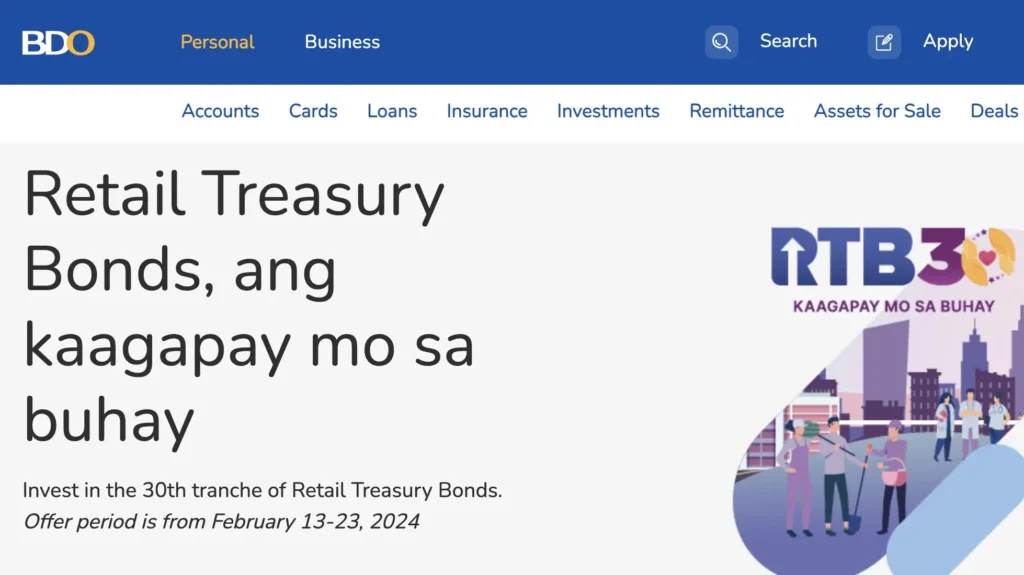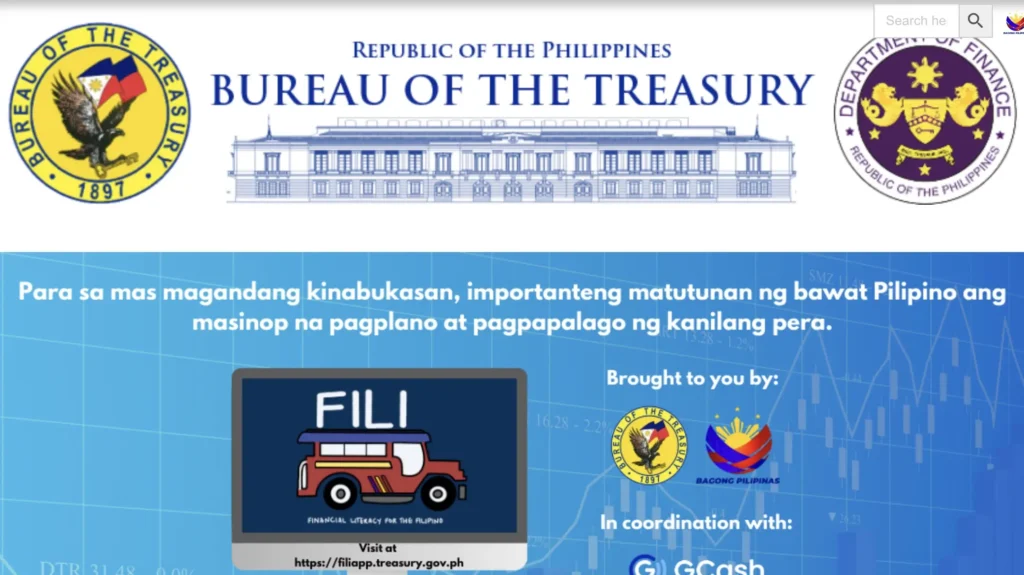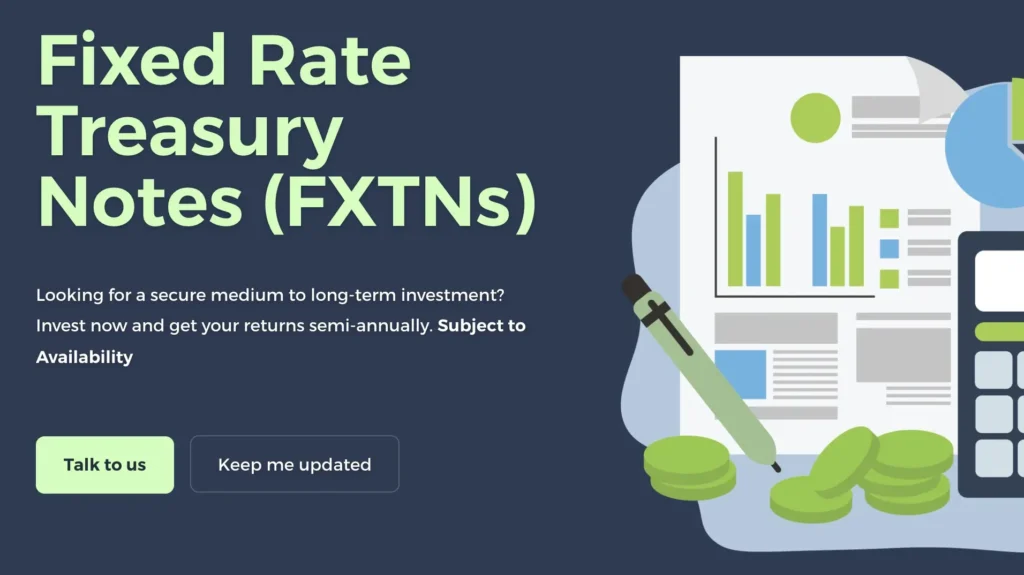How to Invest in Government Bonds in the Philippines 2025
If you’ve ever wondered, “How can I grow my hard-earned money without taking a wild crazy ride on the stock…

To invest in government bonds in the Philippines, you can purchase them through major banks, licensed brokers, or digital platforms like Bonds.PH and the Bureau of the Treasury’s Online Ordering Facility. Simply open an account, transfer funds, and place your order for the type of bond you want (e.g., Retail Treasury Bonds or Premyo Bonds). Once your investment is confirmed, you’ll earn regular interest payments until the bond matures.
If you’ve ever wondered, “How can I grow my hard-earned money without taking a wild crazy ride on the stock market?” — then government bonds might just be your new best friend! 🤑💸
Picture this: You’re investing in something backed by none other than the Philippine government itself. Sounds pretty solid, right? And the best part? You don’t need to be a finance whiz or a millionaire to get started.
Whether you’re saving for a dream vacation, a future home, or just building that emergency fund, government bonds could be your ticket to steady (and safe!) returns.
But wait — before you dive in, you’ll want to stick around and read through this guide. We’re breaking down everything you need to know about investing in government bonds in 2024, from the types of bonds available to how you can start with just a few clicks on your phone. Ready to secure your financial future?
Let’s get into the nitty-gritty!
Key Takeaways
- Government bonds are one of the safest investment options, backed by the Philippine government, making them ideal for risk-averse investors.
- There are several types of bonds available, including Retail Treasury Bonds (RTBs), Treasury Bills (T-Bills), Fixed Rate Treasury Notes (FXTNs), and Premyo Bonds, each tailored to different investment needs.
- RTBs are accessible to individual investors with a minimum investment of just Php 5,000, while Premyo Bonds can be purchased for as low as Php 500.
- You can easily purchase bonds through banks, licensed brokers, or online platforms like Bonds.PH and the Bureau of the Treasury’s Online Ordering Facility.
- Interest earnings from government bonds are subject to a 20% withholding tax, and bonds can be sold on the secondary market if you need liquidity before maturity.
- Government bonds provide fixed, predictable returns, making them a great option for long-term financial stability or portfolio diversification.
Step-by-Step Guide to Investing in Government Bonds
Ready to start investing in government bonds but not sure where to begin? This simple step-by-step guide will walk you through the entire process—from choosing the right bond for your goals, to opening an account, and finally making your first investment.
Step 1: Decide on the Type of Bond You Want to Invest In
Before diving into your investment, it’s essential to decide which type of government bond best fits your financial goals, risk tolerance, and investment timeline.
Here’s what to consider:
- Risk Tolerance: Government bonds are generally low-risk, but longer-term bonds like FXTNs may expose you to inflation risk over time, while short-term securities like T-Bills offer less exposure.
- Time Horizon: If you need your money back sooner, T-Bills (short-term) may be more appropriate. For long-term goals, consider RTBs or FXTNs.
- Investment Goals: Are you looking for steady income, like the quarterly interest payments from RTBs, or do you want to try your luck with Premyo Bonds, which offer a chance to win cash prizes?
Step 2: Choose a Platform or Institution
There are several ways to purchase government bonds in the Philippines:
- Banks: Some of the best banks in the Philippines, such as BDO, BPI, and Metrobank, offer government bonds. You can inquire at your local branch, and the process is straightforward.
- Brokers: If you’re looking for more flexibility or want to buy bonds from the secondary market, licensed brokers can help you with the transaction. They usually offer more options, but fees may be higher.
- Online Platforms: For a more digital experience, platforms like Bonds.PH offer a hassle-free way to purchase and manage government bonds. Simply download the app, register, and start investing from your phone.
Step 3: Open an Account
Once you’ve selected your preferred platform (bank, broker, or app), the next step is to open an account.
Here’s how:
- For Banks: Visit your chosen bank or log into their online banking portal to open an investment account. Fill out the required forms, provide identification, and comply with the bank’s KYC (Know Your Customer) requirements.
- For Brokers: If you’re using a broker, you’ll need to set up an investment account with them. This may involve a more detailed process, including additional forms and a higher minimum balance.
- For Online Platforms: On platforms like Bonds.PH, simply download the app, register, and complete the verification process by submitting your ID and personal details.
Step 4: Fund Your Investment
After your account is set up, you’ll need to fund it to start investing. The minimum investment amounts vary depending on the bond type:
- RTBs: You can start investing with as little as Php 5,000.
- Premyo Bonds: Minimum investment is usually Php 500, making them very accessible.
- T-Bills and FXTNs: These typically require a higher minimum investment, depending on the offer.
Transfer funds from your bank account to your investment account, or deposit directly through your chosen bank or platform.
Step 5: Place Your Order
Now that your account is funded, it’s time to purchase your bonds.
Here’s how to complete the process:
- For Banks: At the bank, either fill out a bond subscription form or complete the transaction through online banking. Some banks also offer automatic bond purchase options during public offerings.
- For Brokers: If you’re using a broker, inform them of the amount and type of bond you wish to purchase. They will handle the transaction for you and confirm once the purchase is complete.
- For Online Platforms: On platforms like Bonds.PH, you can simply log in, choose the bond you want to invest in, and place your order with a few taps.
Step 6: Monitor Your Investment
After purchasing your bonds, it’s important to track your investment:
- Interest Payments: Keep an eye on your interest payment schedule to ensure you’re receiving payments when due. Most bonds, such as RTBs and FXTNs, pay interest quarterly or semi-annually.
- Bond Maturity: Know when your bond will mature, so you can plan for when you will receive your principal back. You may want to reinvest it or allocate it toward other financial goals.
- Market Conditions: While government bonds are relatively stable, it’s still a good idea to monitor broader market and inflation trends, as they can affect the real value of your returns.
What Are Government Bonds?

A government bond is a debt security issued by the government to raise funds for various projects and services. In return, the government promises to pay back the principal amount (your investment) plus interest over a specific period. These bonds are considered low-risk investments because they are backed by the full credit of the government.
For a quick intro about bonds, you may read our other post: What are Bonds.
Types of Government Bonds in the Philippines
There are several types of government bonds available for investors in the Philippines, including:
1. Retail Treasury Bonds (RTBs)
These are designed for individual investors and offer accessible entry points with lower denominations, making them popular among the general public.
2. Treasury Bills (T-Bills)
Short-term bonds with maturities less than a year, often used by investors looking for quick returns with minimal risk.
3. Fixed Rate Treasury Notes (FXTNs)
Medium- to long-term bonds with fixed interest rates, ideal for those seeking steady returns over several years.
4. Premyo Bonds
A unique bond offering that not only provides regular interest income but also gives investors a chance to win prizes through a draw.
How Do Government Bonds Work?
When you invest in government bonds, your money is used by the Philippine government to fund infrastructure projects, public services, and social programs.
This can include anything from building roads and bridges to supporting education and healthcare. Essentially, you’re lending money to the government to help improve the country, while earning interest in return.
How Investors Earn From Bonds

You earn from government bonds through interest payments (also called coupon payments) that are made periodically, typically quarterly or semi-annually. The coupon rate is the fixed interest rate that the government agrees to pay on the bond.
At the bond’s maturity date, the government returns the original amount you invested, known as the principal. This makes bonds a predictable and stable investment, perfect for those who want to earn a steady income over time.
Why Should You Invest in Government Bonds?
Government bonds offer a safe and reliable way to grow your money. For Filipinos looking for low-risk investments, bonds provide the following benefits.
a. Low Risk, High Security
Government bonds are widely regarded as one of the safest investment options available because they are backed by the Philippine government. This means that, in the unlikely event of a financial crisis, the government is still obligated to repay your investment, making it ideal for risk-averse investors or those just starting out.
b. Predictable Returns
Unlike stocks or other volatile investments, government bonds offer fixed, predictable returns. This means you’ll know exactly how much you’re going to earn, and when you’ll receive it. For conservative investors or those looking for stable income, bonds provide consistent payments over time, which you can count on.
c. Diversification
Adding government bonds to your portfolio can help you balance risk, especially when combined with higher-risk investments like stocks, cryptocurrencies, or real estate. Bonds tend to perform consistently, even during market downturns, offering a safety net that can stabilize your overall investment strategy.
Disadvantages of Government Bonds
While government bonds are a secure investment, they come with some trade-offs. It’s important to weigh these downsides before deciding if bonds align with your financial goals.

a. Lower Returns Compared to Stocks
While government bonds are safe, they generally offer lower returns compared to higher-risk investments like stocks or mutual funds. This means that, while your money is secure, it may not grow as quickly as it could in riskier investments.
b. Inflation Risk
One of the downsides of investing in bonds is inflation risk. If the interest rate on the bond is lower than the inflation rate, the purchasing power of your returns may decrease over time, effectively reducing the value of your investment.
c. Opportunity Cost
When you tie up your money in bonds, you may face opportunity cost, meaning you could miss out on potentially higher returns from other investments, such as stocks or businesses. This is particularly important if you’re investing for long-term growth and looking to maximize your returns.
Types of Government Bonds in the Philippines
There are several types of government bonds available in the Philippines, each designed to meet different financial needs and goals. Understanding the various bond options will help you find the right fit for your investment strategy.

1. Retail Treasury Bonds (RTBs)
Retail Treasury Bonds (RTBs) are government bonds specifically designed for individual investors. Unlike bonds that are typically sold in larger denominations, RTBs are more accessible to the general public due to their lower minimum investment amounts. They offer a safe way for everyday Filipinos to invest and earn interest while supporting the government’s funding needs.
How to Invest in RTBs
Here’s a quick step-by-step guide to purchasing RTBs:
- Choose a Platform: You can buy RTBs through banks, licensed brokers, or online platforms like Bonds.PH.
- Open an Account: If you’re using a bank, visit your nearest branch or open an online account. For digital platforms, simply register through the app or website.
- Deposit Funds: Transfer the necessary funds to your account. The minimum investment for RTBs is generally low, starting at Php 5,000.
- Place an Order: Once the RTBs are available for sale, place an order for the amount you want to invest.
- Earn Interest: You will receive periodic interest payments (usually quarterly), and at the bond’s maturity, your principal investment is returned.

2. Treasury Bills (T-Bills)
Treasury Bills (T-Bills) are short-term debt securities issued by the government with maturities of less than a year. They are often considered a low-risk, short-term investment, making them ideal for those looking to park their money for a brief period while earning modest returns.
How to Invest in T-Bills
Here’s how you can invest in T-Bills:
- Select a Bank or Broker: Visit your preferred bank or licensed broker to inquire about available T-Bills.
- Open an Investment Account: If you don’t already have an account, you’ll need to set one up.
- Purchase T-Bills: Once T-Bills are made available for sale, place an order through your bank, broker, or the Bureau of the Treasury.
- Receive Returns: Unlike bonds, T-Bills are sold at a discount and redeemed at face value upon maturity. Your earnings come from the difference between the purchase price and the face value.

3. Fixed Rate Treasury Notes (FXTNs)
Fixed Rate Treasury Notes (FXTNs) are medium- to long-term government bonds with a fixed interest rate. They are ideal for investors looking for a stable income stream over a longer period, typically ranging from 3 to 25 years.
How to Invest in FXTNs
To invest in FXTNs, follow these steps:
- Choose Where to Buy: FXTNs can be purchased from banks, brokers, or secondary markets.
- Open an Account: If you don’t already have an account, you’ll need to open one with a bank or broker.
- Deposit Funds: Transfer the necessary funds to your account.
- Purchase FXTNs: Once FXTNs are on offer, place an order for the desired amount. The minimum investment may vary depending on the offer.
- Earn Interest: FXTNs pay fixed interest periodically (often semi-annually), and you’ll receive your principal at the bond’s maturity.

4. Premyo Bonds
Premyo Bonds are a unique type of government bond that offers regular interest income like other bonds, but with a twist: they come with a chance to win cash prizes through quarterly lottery draws. This makes Premyo Bonds an attractive option for those looking to earn while having fun with the possibility of winning additional rewards.
How to Invest in Premyo Bonds
To invest in Premyo Bonds:
- Choose a Platform: Purchase Premyo Bonds through banks, brokers, or online platforms like Bonds.PH.
- Open an Account: Set up an account either through a bank branch or digital platform.
- Deposit Funds: Transfer the amount you want to invest (minimum investment is typically Php 500).
- Earn and Win: In addition to earning interest, you’ll be automatically entered into a quarterly raffle draw for a chance to win cash prizes. The more bonds you own, the higher your chances of winning!
Where to Buy Government Bonds in the Philippines
There are many ways to purchase government bonds in the Philippines, making it easy for investors to get started. You can choose the one that best suits your needs and lifestyle.
Purchasing Through Banks
One of the most common ways to invest in government bonds is through major banks in the Philippines. These banks offer a secure and straightforward process for purchasing bonds, either through their physical branches or online banking portals. Here are some of the key banks where you can buy government bonds:
- BDO Unibank: Offers access to government bonds through its investment services. You can inquire at any branch or via online banking.
- BPI (Bank of the Philippine Islands): Provides government bonds as part of its investment products. You can also subscribe online through their digital platform.
- Metrobank: Allows clients to invest in government bonds through their branches or online investment platform.
- Landbank of the Philippines: Being a government-owned bank, Landbank frequently participates in government bond offerings and provides easy access to bonds.
- PNB (Philippine National Bank): PNB offers government bonds through its branches and online channels, making it convenient for both retail and institutional investors.
Online Platforms for Buying Government Bonds
For those who prefer convenience and speed, online platforms offer a hassle-free way to invest in government bonds. Here are some options.
Bonds.PH
For those with busy lifestyles or who prefer digital convenience, Bonds.PH is a fantastic option for purchasing government bonds. Developed by the Philippine Bureau of the Treasury in partnership with UnionBank, Bonds.PH allows you to buy government bonds entirely online. With the app, you can:
- Easily Register: Sign up in just a few minutes using your mobile phone, with minimal documentation required.
- Track Your Investments: The app shows real-time information on your bond holdings, including interest payments and bond maturity dates.
- Invest Anytime, Anywhere: Whether you’re at home or on the go, you can purchase bonds without visiting a bank or broker.
Other Available Platforms
Besides Bonds.PH, there are other platforms where you can purchase government bonds:
- Bureau of the Treasury Online Ordering Facility: The Bureau of the Treasury has an online facility where you can directly buy government bonds during public offerings. This platform is especially useful when new bond offerings are announced and allows for direct participation without needing a third-party institution.
- Investors’ Mobile App (IMA): Another government platform that allows users to invest in bonds through a mobile app. It’s designed to make bond investing more accessible to Filipinos, especially those who prefer to manage their investments digitally.
Key Considerations Before Investing in Government Bonds
Before jumping into government bonds, it’s important to understand the key factors that can impact your investment. Knowing these details in advance can make more informed decisions and ensure that bonds align with your financial goals.
1. Minimum Investment Amounts
One of the appealing aspects of government bonds in the Philippines is their accessibility to a wide range of investors, including those with limited capital.
The minimum investment amounts vary depending on the type of bond:
- Retail Treasury Bonds (RTBs): You can start investing in RTBs with as little as Php 5,000, making them ideal for first-time investors.
- Premyo Bonds: These bonds are even more accessible, with a minimum investment of Php 500, allowing almost anyone to start investing.
- Treasury Bills (T-Bills) and Fixed Rate Treasury Notes (FXTNs): These typically require a higher initial investment, often starting at Php 50,000 or more, depending on the specific offering and the institution selling them.
2. Interest Rates and Returns
Government bonds offer fixed interest payments, also known as coupon payments, which are paid periodically (usually quarterly or semi-annually). The coupon rate is the percentage of interest you’ll earn based on the bond’s face value.
- Retail Treasury Bonds (RTBs): RTBs typically offer interest rates between 2% to 5% per year, depending on the economic conditions at the time of issuance.
- Treasury Bills (T-Bills): These are sold at a discount, meaning you’ll buy them below their face value and earn the difference when they mature. The return is typically lower compared to long-term bonds, but still offers a safe, short-term investment option.
- Fixed Rate Treasury Notes (FXTNs): FXTNs typically provide higher returns than short-term bonds, with interest rates that can range from 3% to 6% or more, depending on the bond’s maturity period and prevailing market conditions.
3. Tax Implications
It’s important to be aware of the tax implications when investing in government bonds. In the Philippines, bond investors are subject to a 20% withholding tax on interest earnings. This means that 20% of the interest income you earn will be automatically deducted before the remaining amount is paid to you.
For example, if your bond pays Php 1,000 in interest, you’ll receive Php 800 after the 20% tax is applied. Keep this in mind when calculating your net returns from bond investments.
4. Liquidity
Government bonds are typically considered long-term investments, but there may be situations where you need to liquidate your investment before the bond matures.
The good news is that government bonds can be sold on the secondary market through banks or brokers. However, the price at which you sell will depend on current market conditions.
- If interest rates have fallen since you purchased the bond, you may be able to sell it at a premium (higher than the face value).
- If interest rates have risen, you might have to sell at a discount (lower than the face value), resulting in a potential loss.
5. Investment Timeline
When deciding between short-term and long-term bonds, it’s crucial to consider your financial goals and time horizon:
- Short-Term Bonds (e.g., Treasury Bills): These bonds have maturities of less than a year, making them ideal for investors who need their money back relatively quickly or for those looking for a safe place to park their cash temporarily. They offer lower returns but provide greater flexibility.
- Long-Term Bonds (e.g., RTBs, FXTNs): These bonds can have maturities ranging from several years to decades. While they lock your money up for a longer time, they often provide higher interest rates and a more stable income stream, making them suitable for long-term financial goals like retirement or education funds.
Frequently-Asked Questions
Which bond investment offers the best returns in the Philippines?
Generally, Fixed Rate Treasury Notes (FXTNs) offer higher returns over the long term, while Retail Treasury Bonds (RTBs) provide stable, moderate returns with lower risk. Premyo Bonds offer additional incentives, like cash prizes, which could also be attractive to some investors.
Does BDO provide access to Treasury bonds?
BDO Unibank offers access to government bonds, including Treasury bonds, through their investment services. You can inquire at any BDO branch or access these bonds via their online banking portal.
Is it possible to purchase Treasury bonds on my own?
Yes, you can purchase Treasury bonds on your own through banks, licensed brokers, or online platforms like Bonds.PH. The Bureau of the Treasury also offers an Online Ordering Facility where you can directly buy bonds during public offerings.
What are the potential drawbacks of investing in Treasury bonds?
The main drawbacks of Treasury bonds include lower returns compared to riskier investments like stocks, as well as inflation risk, which can erode the purchasing power of your returns. Additionally, there is an opportunity cost, as your money is tied up in bonds, potentially missing out on higher-yielding investments.
What is the smallest amount required to invest in Treasury bonds?
The minimum investment for Retail Treasury Bonds (RTBs) is typically Php 5,000, while Premyo Bonds can be purchased for as little as Php 500. Other types of bonds, like Treasury Bills (T-Bills) and Fixed Rate Treasury Notes (FXTNs), often require higher minimum investments, starting around Php 50,000.
Are Treasury bond earnings subject to taxes in the Philippines?
Earnings from Treasury bonds in the Philippines are subject to a 20% withholding tax on interest income. This tax is automatically deducted from your interest payments.
What’s the easiest way for beginners to start investing in bonds?
For beginners, the easiest way to start investing in bonds is through Retail Treasury Bonds (RTBs), which have a low minimum investment and are available through banks and online platforms like Bonds.PH. These bonds offer a safe and accessible entry point for new investors.
How can I buy Treasury bills through BPI?
To buy Treasury Bills (T-Bills) through BPI, you can visit a branch or log into their online banking platform. Once you’ve opened an investment account, you can place your order during a public offering or inquire about availability in the secondary market.
Are there any fees associated with buying Treasury bonds?
There may be minimal transaction fees or service charges when purchasing Treasury bonds through banks or brokers. However, fees vary depending on the institution, and some online platforms like Bonds.PH may offer fee-free transactions during public offerings.
What’s the maximum amount of Treasury bonds I can purchase?
There is generally no strict upper limit on how much you can invest in Treasury bonds, although some offerings may cap individual purchases to ensure broad participation. You can invest as much as your financial capacity and the specific bond offering allows.
Final Thoughts
Investing in government bonds in the Philippines is not only a safe and stable way to grow your money, but it’s also incredibly accessible—whether you’re a seasoned investor or just getting started.
With options like Retail Treasury Bonds (RTBs), Premyo Bonds, and Treasury Bills, there’s a bond out there for everyone, regardless of your financial goals or risk tolerance.
By now, you’ve learned the ins and outs of how to invest, where to buy, and what to consider before diving in. Whether you’re aiming to build a solid financial foundation or diversify your portfolio, government bonds offer a reliable path to steady returns—all while contributing to the nation’s growth.





